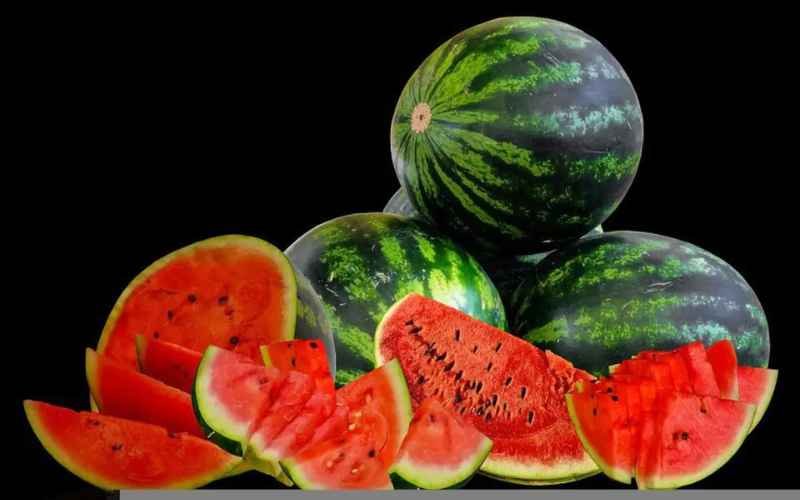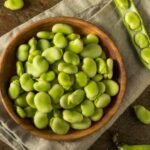Welcome to the juicy world of watermelon! A fruit synonymous with summer, picnics, and refreshing treats. But there’s more to this vibrant fruit than just its sweetness and thirst-quenching properties. Join me as we explore the fascinating journey of watermelon, from its origins to its nutritional benefits, and beyond.

Origin Story:
Watermelon (Citrullus lanatus) traces its roots back to the Kalahari Desert in Africa, where it is believed to have originated. This succulent fruit has a rich history spanning thousands of years. Initially valued primarily for its high water content, it played a crucial role in providing hydration in the harsh desert environments of Africa.
As civilizations developed and trade routes expanded, watermelon found its way to different parts of the world. Its journey was marked by cultural exchanges and adaptations, as it became an integral part of various cuisines and traditions.
The spread of watermelon beyond Africa was facilitated by its resilient nature and adaptability to different climates. It quickly gained popularity in regions with warm climates, where it thrived and became a staple in local diets.
Varieties:
Watermelons exhibit remarkable diversity in their characteristics, offering a range of options to suit different tastes and preferences. These variations include:
Red-Fleshed Varieties:
- Classic Watermelon: The traditional red-fleshed watermelon is perhaps the most widely recognized variety. It typically features deep red, juicy flesh with black seeds, offering a sweet and refreshing taste.
Seedless Varieties:
- Seedless Watermelon: Developed through selective breeding, seedless watermelons offer convenience as they contain fewer or no seeds. They maintain the same sweet flavor and juicy texture as their seeded counterparts.
Yellow and Orange-Fleshed Varieties:
- Yellow Watermelon: Yellow-fleshed watermelons have a milder, sweeter flavor compared to red-fleshed varieties. Their flesh ranges from pale yellow to vibrant gold, adding visual appeal to fruit salads and desserts.
- Orange Watermelon: With flesh ranging from pale orange to deep coral, orange-fleshed watermelons boast a sweet and tangy flavor profile, reminiscent of citrus fruits. They provide a unique twist to traditional watermelon dishes.
Mini and Personal-Sized Varieties:
- Mini Watermelon: These petite watermelons are perfect for individuals or small families. They offer the same taste and quality as larger varieties but in a more manageable size.
- Personal-Sized Watermelon: Slightly larger than mini watermelons, personal-sized watermelons are ideal for sharing or enjoying as a single serving. They are convenient for picnics, lunches, or snacks on the go.
Specialty Varieties:
- Striped Watermelon: Characterized by distinctive stripes on the rind, striped watermelons add visual interest to fruit displays. They often have a crisp texture and a subtly sweet flavor.
- Moon and Stars Watermelon: Named for their unique appearance, with dark green rinds speckled with yellow spots (resembling stars) and sometimes larger yellow patches (resembling a moon), these heirloom varieties offer a sweet, juicy taste.
Novelty Varieties:
- Square Watermelon: Grown in molds to achieve a square shape, square watermelons are primarily novelty items. While they may not differ significantly in taste from traditional varieties, their geometric form adds novelty to presentations and displays.
Each watermelon variety contributes its distinct characteristics, enhancing culinary experiences and offering versatility in cooking, baking, and beverage making. From the classic red-fleshed watermelon to the exotic striped and square varieties, the world of watermelons is as diverse as it is delicious.
Nutritional Powerhouse:
Contrary to its name, watermelon isn’t merely a source of hydration; it’s a nutritional powerhouse packed with essential vitamins, minerals, and antioxidants. Here’s why watermelon stands out as a nutritious fruit:
Rich in Vitamins:
- Vitamin A: Watermelon is abundant in vitamin A, which plays a crucial role in maintaining healthy vision, skin, and immune function.
- Vitamin C: Renowned for its immune-boosting properties, vitamin C is plentiful in watermelon. It supports collagen production, wound healing, and overall immune health.
Antioxidant Content:
- Lycopene: Watermelon is one of the richest sources of lycopene among fruits. This powerful antioxidant is responsible for the fruit’s vibrant red color and has been linked to various health benefits, including reducing the risk of heart disease, certain cancers, and inflammation.
Hydration and Low-Calorie Content:
- Hydration: While watermelon contains a high water content (over 90%), it also provides essential electrolytes, such as potassium, which aid in hydration and maintaining fluid balance in the body.
- Low in Calories: Despite its sweet taste, watermelon is relatively low in calories, making it an excellent option for those watching their calorie intake. Its natural sweetness satisfies cravings without adding excess calories.
Other Nutrients:
- Potassium: Watermelon contains potassium, an electrolyte essential for regulating blood pressure, muscle function, and nerve signals.
- Citrulline: This amino acid is abundant in watermelon and has been associated with improved exercise performance, reduced muscle soreness, and enhanced heart health.
Versatility and Guilt-Free Indulgence:
- Versatility: Watermelon can be enjoyed in various forms, from refreshing slices to smoothies, salads, and sorbets, making it a versatile ingredient in both sweet and savory dishes.
- Guilt-Free Indulgence: With its low calorie and high nutrient content, watermelon can be enjoyed guilt-free as a wholesome snack or dessert option.
Versatile Culinary Delight:
Watermelon’s culinary potential goes far beyond its role as a refreshing snack. This versatile fruit lends itself to a myriad of creative culinary creations, offering a unique combination of sweetness and freshness. Here are some delightful ways to incorporate watermelon into your culinary repertoire:
Refreshing Salads:
- Watermelon Feta Salad: A classic combination of juicy watermelon cubes, salty feta cheese, fresh mint, and a drizzle of balsamic glaze creates a harmonious blend of flavors and textures.
- Thai Watermelon Salad: Tossed with spicy Thai chili, tangy lime juice, refreshing cucumber, and aromatic herbs like cilantro and basil, this salad offers a burst of exotic flavors with a hint of heat.
Summery Beverages:
- Watermelon Mint Cooler: Blend chilled watermelon chunks with fresh mint leaves and a splash of lime juice for a revitalizing and hydrating drink perfect for hot summer days.
- Watermelon Agua Fresca: Combine pureed watermelon with water, a touch of sugar or honey, and a squeeze of lemon or lime for a light and refreshing Mexican-inspired beverage.
Frozen Treats:
- Watermelon Sorbet: Puree watermelon chunks with a bit of sugar and lemon juice, then freeze the mixture for a refreshing and guilt-free dessert option.
- Watermelon Popsicles: Insert popsicle sticks into watermelon wedges or use a popsicle mold to freeze pureed watermelon for a fun and kid-friendly summer treat.
Savory Salsas and Sauces:
- Watermelon Salsa: Combine diced watermelon with chopped jalapeño, red onion, cilantro, and lime juice for a sweet and spicy salsa that pairs perfectly with grilled fish, chicken, or tacos.
- Watermelon BBQ Sauce: Puree watermelon with molasses, vinegar, and spices to create a unique and tangy barbecue sauce that adds a touch of sweetness to grilled meats and veggies.
Creative Appetizers and Entrees:
- Watermelon Gazpacho: Blend watermelon with tomatoes, cucumbers, bell peppers, and onions to create a refreshing and chilled soup perfect for summer gatherings.
- Grilled Watermelon Skewers: Grill watermelon cubes and skewer them with feta cheese, basil leaves, and balsamic glaze for an elegant and flavorful appetizer or side dish.
Whether you’re craving something sweet, savory, or somewhere in between, watermelon offers endless possibilities for culinary experimentation. Its versatility and subtle sweetness make it a delightful addition to a wide range of dishes, elevating your dining experience with its refreshing taste and vibrant color.
Cultural Significance:
Watermelon holds a profound cultural significance in numerous regions across the globe, serving as more than just a delicious fruit. Its symbolism transcends mere culinary delight and embodies themes of abundance, celebration, and community.
Festivals and Celebrations:
- Abundance and Prosperity: In various cultures, watermelon is associated with abundance and prosperity. It is often prominently featured during festivals and celebrations, symbolizing good fortune and the bountiful harvest.
- Harvest Festivals: During harvest festivals in agricultural communities, watermelon plays a central role in rituals and offerings, signifying the fruitful yield of the land and the gratitude of the people.
Summertime Traditions:
- Picnics and Gatherings: Watermelon is a cherished part of summertime traditions, particularly in regions with warm climates. Families and friends gather for picnics and outdoor gatherings, where watermelon serves as a refreshing and communal treat.
- Beach and Poolside Refreshment: At beaches and poolside venues, watermelon is a popular choice for its hydrating properties and cooling effect, enhancing the enjoyment of leisure activities under the sun.
Symbol of Hospitality and Generosity:
- Hospitality: Offering guests watermelon is a gesture of hospitality and warmth in many cultures. Sharing slices of watermelon with visitors is a common practice, fostering a sense of camaraderie and goodwill.
- Generosity: Watermelon’s large size and abundance of juicy flesh make it a symbol of generosity and sharing. It is often served generously at social gatherings and festive occasions, reflecting the spirit of communal sharing and abundance.
Cultural Traditions and Customs:
- Symbolism in Art and Literature: Watermelon’s vibrant colors and juicy texture inspire artists and writers, who often incorporate it into their works as a symbol of vitality, abundance, and joy.
- Cultural References: Watermelon features prominently in folklore, songs, and proverbs, reflecting its cultural significance and enduring presence in the collective imagination of societies worldwide.
Historical and Social Significance:
- Historical Roots: Watermelon’s cultivation dates back thousands of years, and its cultural significance has evolved over time, intertwining with the histories and traditions of diverse civilizations.
- Social Cohesion: Sharing and enjoying watermelon together fosters social cohesion and strengthens bonds within communities, transcending cultural and linguistic barriers.
Fun Facts:
Discover some fascinating facts about watermelon that showcase its unique characteristics and surprising versatility:
- Gigantic Gourds: The heaviest watermelon ever recorded tipped the scales at over 350 pounds (approximately 158.8 kilograms), earning it a place in the annals of Guinness World Records as one of the largest fruits ever grown.
- Family Ties: Watermelon belongs to the Cucurbitaceae family, which includes other popular garden vegetables and fruits such as cucumbers, pumpkins, and squash. This makes watermelon a distant cousin to these familiar favorites.
- Edible Everything: Unlike many fruits where only the flesh is consumed, every part of the watermelon is edible. From the juicy flesh to the crunchy seeds and even the often-overlooked rind, watermelon offers a plethora of culinary possibilities and nutritional benefits.
Conclusion:
Whether you enjoy it sliced, diced, or blended into a refreshing beverage, watermelon never fails to delight the senses. From its humble origins in the African desert to its status as a global culinary sensation, this fruit has earned its place as a symbol of summer and vitality. So next time you bite into a juicy slice of watermelon, take a moment to appreciate the rich history and nutritional benefits of nature’s refreshing delight. Cheers to the humble yet extraordinary watermelon!
Top 20 FAQs about The Juicy Tale of Watermelon
1. What is the botanical classification of watermelon?
- Watermelon belongs to the botanical family Cucurbitaceae and is scientifically known as Citrullus lanatus.
2. Where did watermelon originate?
- Watermelon is believed to have originated in the Kalahari Desert of Africa.
3. How long has watermelon been cultivated?
- Watermelon has been cultivated for thousands of years, with evidence of its consumption dating back to ancient Egypt.
4. What is the nutritional value of watermelon?
- Watermelon is a rich source of vitamins A and C, antioxidants like lycopene, and minerals like potassium. It is also low in calories, making it a nutritious and guilt-free snack.
5. Can you eat watermelon seeds?
- Yes, watermelon seeds are edible and are often roasted and consumed as a snack.
6. What is the largest recorded weight for a watermelon?
- The heaviest watermelon on record weighed over 350 pounds (approximately 158.8 kilograms).
7. Are there different varieties of watermelon?
- Yes, watermelons come in various shapes, sizes, and colors, including red-fleshed, yellow-fleshed, seedless, mini, striped, and novelty varieties.
8. How do you know if a watermelon is ripe?
- A ripe watermelon typically has a deep, hollow sound when tapped, a firm texture, and a creamy yellow spot (known as the “ground spot”) where it rested on the ground while growing.
9. Can you eat the watermelon rind?
- Yes, the watermelon rind is edible and can be pickled, stir-fried, or blended into smoothies for added nutrition.
10. Is watermelon a fruit or a vegetable?
- Watermelon is botanically classified as a fruit because it develops from the ovary of a flowering plant and contains seeds. However, it is often culinary classified as a fruit due to its sweet taste.
11. What are some popular culinary uses of watermelon?
- Watermelon can be enjoyed fresh, in salads, smoothies, sorbets, salsas, gazpachos, and even grilled for savory dishes.
12. How do you store watermelon to keep it fresh?
- Whole watermelons should be stored at room temperature until cut, then refrigerated in an airtight container for up to a week. Cut watermelon should be stored in the refrigerator and consumed within a few days.
13. Is watermelon hydrating?
- Yes, watermelon has a high water content (over 90%) and contains electrolytes like potassium, making it a hydrating fruit.
14. What are the health benefits of watermelon?
- Watermelon is known for its potential health benefits, including supporting hydration, promoting heart health, reducing inflammation, and providing antioxidant protection.
15. Can watermelon be grown in different climates?
- Yes, watermelon is adaptable to various climates but thrives in warm, sunny conditions. It is grown in many regions around the world.
16. How do you incorporate watermelon into beverages?
- Watermelon can be blended into smoothies, juices, agua frescas, cocktails, and mocktails for a refreshing and hydrating drink option.
17. What is the symbolism of watermelon in different cultures?
- Watermelon symbolizes abundance, prosperity, hospitality, and summertime joy in various cultures, often associated with festivals, celebrations, and social gatherings.
18. Can you freeze watermelon?
- Yes, watermelon can be frozen for later use in smoothies, sorbets, or as a refreshing snack. Simply cut it into cubes and freeze in an airtight container.
19. Are there any traditional medicinal uses of watermelon?
- In some traditional medicine practices, watermelon is used to alleviate heat-related illnesses, promote digestion, and improve urinary function.
20. How do you select a ripe watermelon at the store?
- Look for a watermelon that feels heavy for its size, has a dull rather than shiny rind, and has a creamy yellow spot (the ground spot) where it rested on the ground while growing. Additionally, ensure there are no soft spots, bruises, or cracks on the surface.
Register for My Upcoming Masterclass HERE
See You in the Live Masterclass
Sunil Chaudhary stands as a preeminent global Leading digital coach, boasting a diverse clientele hailing from over 50 nations. Renowned for his prowess as an exemplary SEO expert, business automation coach, and landing page authority, Chaudhary also holds the distinction of being esteemed as the finest business coach in India. Beyond technical domains, he imparts invaluable insights into mindset, success, and life skills, thus encompassing a holistic approach to mentorship.
Join FREE Courses HERE
Know The Author:
 Sunil Chaudhary aka Suniltams Guruji is India’s Leading Digital Coach. He provides complete Digital Skill Development Coaching with great support. Sunil has trained more than 25000 students and helped more than 1100 businesses so far. Sunil is a well-known face across the world for Digital Coaching.
Sunil Chaudhary aka Suniltams Guruji is India’s Leading Digital Coach. He provides complete Digital Skill Development Coaching with great support. Sunil has trained more than 25000 students and helped more than 1100 businesses so far. Sunil is a well-known face across the world for Digital Coaching.
Digital Success Coach | Best SEO Coach India | Mindset Coach | Life Success Coach
Related posts:
 5 Rose-Infused Recipes to Elevate Your Ramadan 2024
5 Rose-Infused Recipes to Elevate Your Ramadan 2024
 Holi 2024: Gujiya to Thandai, 5 Traditional Holi Recipes That Will Make You Drool
Holi 2024: Gujiya to Thandai, 5 Traditional Holi Recipes That Will Make You Drool
 Unveiling the Viral Weight Loss Trend: Exploring Oatzempic
Unveiling the Viral Weight Loss Trend: Exploring Oatzempic
 Superfood Pigweed: Unveiling the 5 Incredible Benefits of Amaranth
Superfood Pigweed: Unveiling the 5 Incredible Benefits of Amaranth
 Superfood Fava Beans: Know these 5 Benefits of Baakala
Superfood Fava Beans: Know these 5 Benefits of Baakala
 Heat Stroke in Summer: What are the causes and how to prevent it?
Heat Stroke in Summer: What are the causes and how to prevent it?
 Juices for Morning Minerals
Juices for Morning Minerals
 “Summer Gut Health: Essential Tips for a Happy Gut”
“Summer Gut Health: Essential Tips for a Happy Gut”
 Skim Milk vs. Whole Milk: Which is Healthier?
Skim Milk vs. Whole Milk: Which is Healthier?








